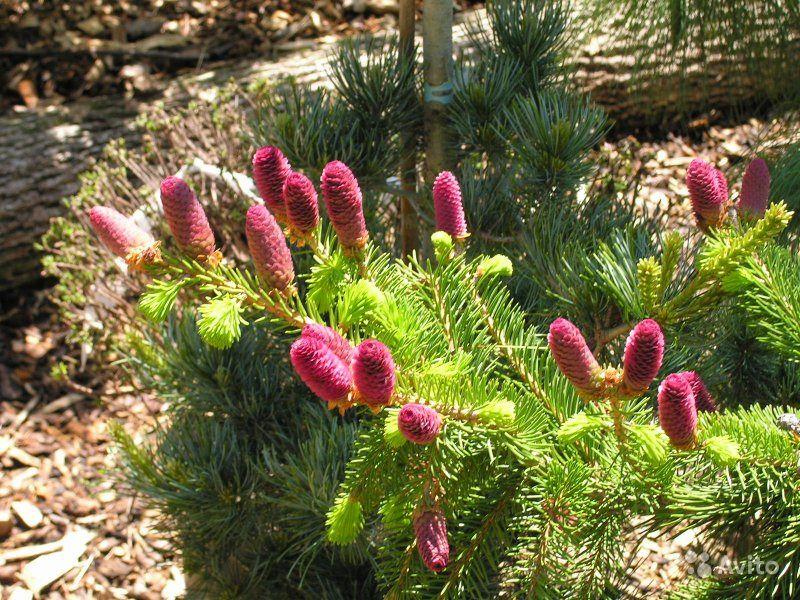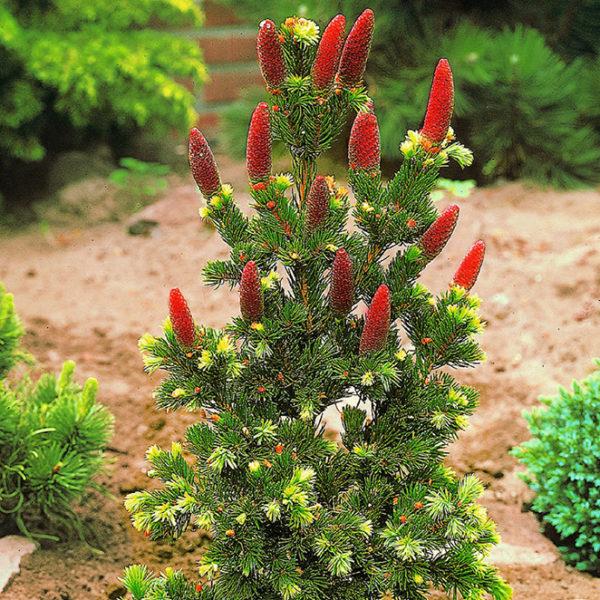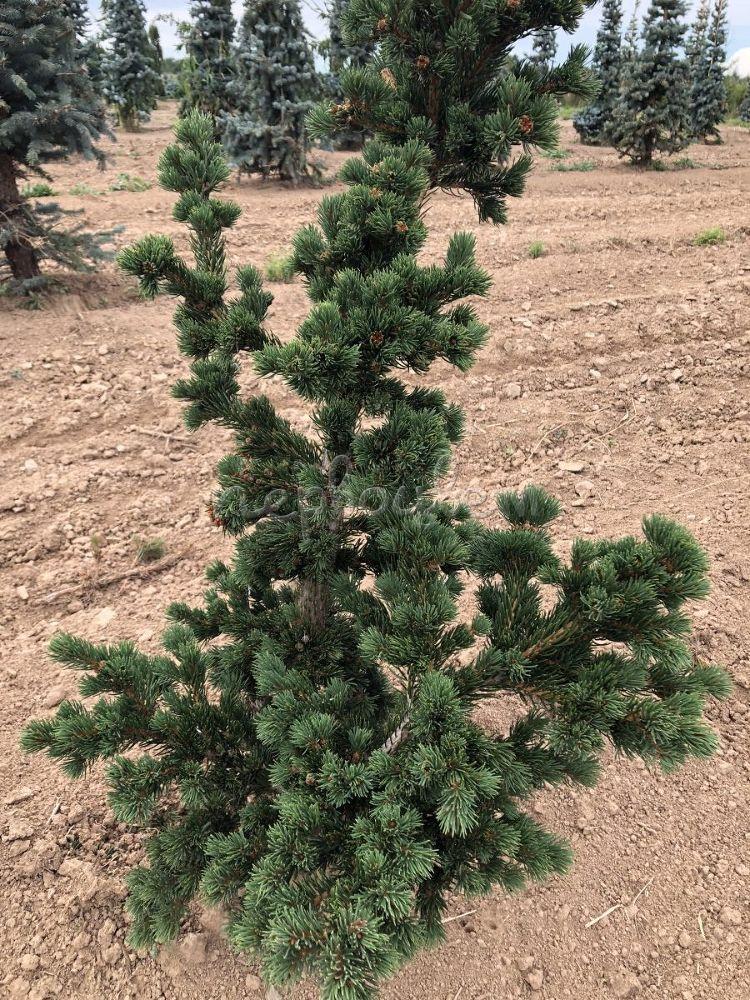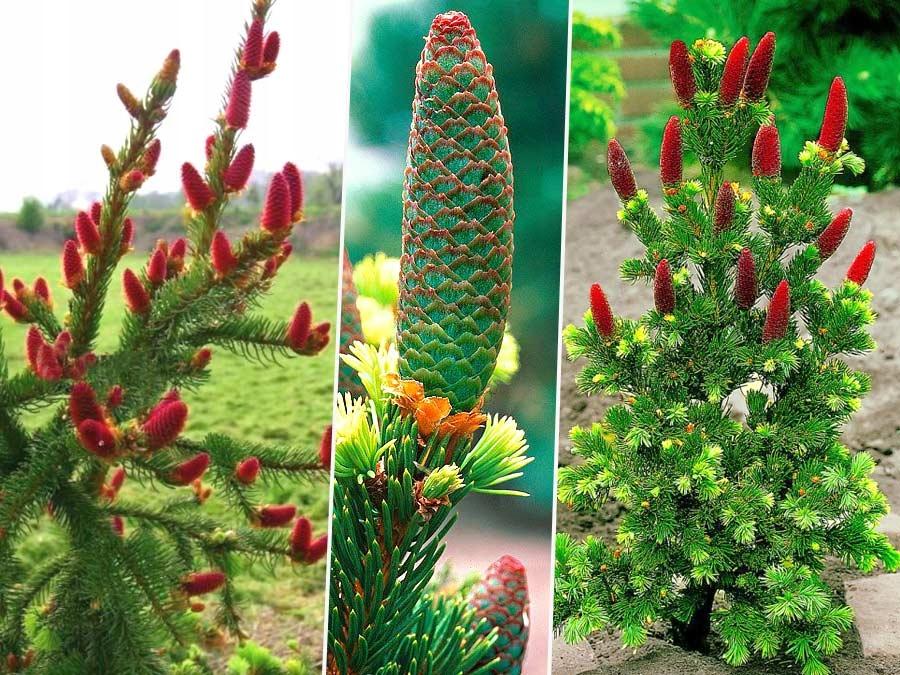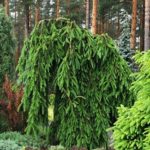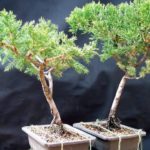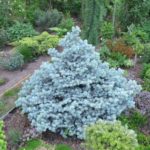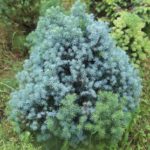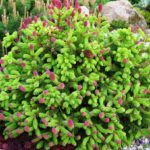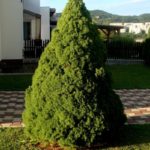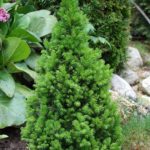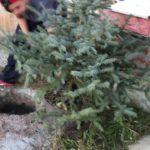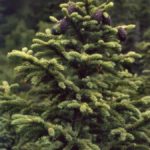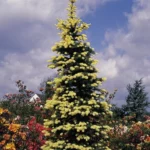Lucky Strike spruce is called a very spectacular crop, which is often used in landscape design. This plant has gained wide popularity due to the presence of a compact and at the same time fluffy crown. Another advantage of the plant is the presence of many spectacular cones. In order for the plant to maintain its decorative properties for a long time, it needs to be properly cared for.
Description of spruce
Prickly spruce Lucky Strike is considered a typical representative of the Pine family, which is distinguished by its unusual appearance.The plant has an irregular asymmetrical crown, which looks somewhat disheveled. A distinctive feature of the culture is the uneven growth of branches. This creates a unique silhouette that perfectly complements any composition.
Spruce of this variety is characterized by a number of distinctive features:
- An adult plant reaches a height of 1.3-1.5 meters.
- The crown has a width from 20 centimeters to 1.5 meters.
- The bark is yellowish-brown in color.
- The plant has a needle-like, hard crown with a bluish sheen. The length of the needles is 2-3 centimeters. Young growth has a yellow-green tint.
- The cones resemble candles in appearance and reach a length of 15 centimeters. They can have a very unusual color - from lilac-red to light brown.
- The branches are short and bend in different directions. This makes the tree especially attractive.
Lucky Strike spruce is characterized by slow growth. The tree grows by 10-15 centimeters per year. Even an adult plant has a very modest size. Light, well-drained soil is suitable for this crop. It is best to use sandy or sandy loam soil.
The crop does not tolerate high groundwater levels and high humidity. In heavy soil, it is necessary to provide for the creation of a drainage layer. It is necessary to plant spruce in a well-lit place. The fact is that in the shade the branches stretch out, the needles change their color and lose their decorative effect.
Where does this name come from?
Lucky Strike prickly spruce was bred by Dutch breeders. This culture was obtained in 1983 in a nursery in the city of Boskop. The name of the plant literally means “lucky shot.” The variety quickly became very popular among gardeners and remains in demand to this day.
Correct fit
A suitable place for planting Lucky Strike spruce is considered to be a sunny area that has light and loose soil with a slightly acidic reaction. To use the plant in landscape design, it is best to plant it in sandy or sandy loam soil.
The root system of the crop does not tolerate stagnant moisture well, so this variety is prohibited from growing in swampy soil with high groundwater levels.
To plant a crop, you should do the following:
- Make a recess for planting measuring 50-70 centimeters. Its diameter should be twice the size of the earthen ball around the root system of the plant.
- Place drainage at the bottom. It may consist of pebbles, crushed bricks or coarse sand. The thickness of such a layer should be at least 15 centimeters.
- Combine the soil that was obtained when digging the hole with turf, sand and peat. This must be done in a ratio of 2:2:1:1.
- Place the seedling with a lump of soil in the hole. It is important to ensure that the root collar is level with the ground surface.
- Fill the hole with the prepared nutrient composition and lightly compact the soil around the seedling.
- Pour 40-50 liters of warm water under the plant.
- When the liquid is completely absorbed, cover the soil with a mulch layer. It may consist of tree bark or dry wood chips.
When planting several spruce trees of this variety, it is important to strictly observe the interval between them. It should be at least 2-3 meters. This is required so that the wide crowns of trees do not disturb each other’s development.
Care instructions
In order for a spruce of this variety to grow and develop normally, it needs to be properly cared for. This plant requires timely watering and fertilization. It also needs to be trimmed from time to time.
Watering and fertilizing
Spruce Lucky Strike can withstand short droughts. However, in order for the tree to retain its decorative properties, it needs to be additionally watered in the summer. This must be done in case of prolonged absence of precipitation. To strengthen the tree’s immunity and ensure its normal development, it is necessary to add nutrients.
So, when caring for your spruce, you should adhere to the following rules:
- In hot and dry weather, it is recommended to irrigate the tree once a week.
- To water one plant, you should use 10-12 liters of warm water.
- For the first time, fertilizing should be applied immediately after planting. For 1 square meter it is worth using 40 grams of nitroammophoska.
- For mature plants, you need to use complex fertilizers for conifers. They should be purchased at the store. It is recommended to use such products 2 times during the season. It is important to follow the instructions on the packaging.
Loosening and mulching
To improve the breathability of the soil and facilitate water absorption during watering, the soil around the spruce trees needs to be loosened from time to time. This should be done to a depth of about 5 centimeters. This manipulation is carried out after each watering or precipitation.
To reduce water evaporation and maintain soil moisture for a longer period, it is necessary to lay a layer of mulch around the trunk. To do this, it is permissible to use dry pine bark. In winter, the tree trunk area must be covered with a mulching layer of peat. Its size should be 5 centimeters.With the arrival of spring, this substance simply needs to be mixed with the soil.
When growing Lucky Strike spruce in areas with harsh winters, the young tree must be additionally insulated with spruce branches. This helps protect the crop from frostbite. In addition, the material allows you to avoid breakage of fragile branches under a layer of snow.
Trimming
Sometimes the Lucky Strike spruce needs sanitary pruning. In more rare cases, it requires crown formation. Pruning should be done in late spring or early summer. During the procedure, you need to remove dry and damaged branches.
The plant must be given a certain shape when creating a landscape composition or hedge. Pruning is usually required for trees older than 8-10 years. To do this, it is recommended to use a sharp, sterile instrument. Young spruce trees must be tied up so that they do not break under the weight of the snow cover.
Pest Control
If the spruce care rules are followed, Lucky Strike varieties rarely suffer from diseases and pests. If the gardener made mistakes when planting, the spruce is subject to attacks by parasites and the development of pathologies. The most common problems of this culture include the following:
- Spruce-leaf hermes - this parasite belongs to the sucking insects. It lays small red-yellow eggs covered with a fluffy coating on the needles. The larvae that appear feed on the sap of the shoots. In this case, the needles turn yellow and become deformed. With the subsequent development of the pathology, curvature and death of the shoots are observed. To cope with parasites, you should use products such as Decis and Karbofos.
- Spruce budworm - lays eggs on spruce shoots.In this case, the appearance of caterpillars leads to damage to the wood. They gnaw through the bark and make round holes in it. After which the caterpillars fall deep into the trunk. As a result, the branches become deformed and dry out. To destroy leaf rollers, use "Karbofos".
- Schutte is a fungal disease that is accompanied by drying and yellowing of spruce. In this case, the plant’s needles turn brown and the branches dry out. Branches affected by the disease must be pruned and destroyed. To cope with the pathology, it is worth using special means - in particular, “Fundazol” or “Zineb”.
Most often, spruce plantings suffer from improper care of the soil around the trees, excessive or insufficient watering, and a deficiency of nutrients in the soil. To avoid the development of the listed pathologies and pest attacks, you should follow simple safety rules:
- choose the right area for planting;
- use high-quality planting material;
- observe the watering and fertilizing regime;
- loosen the soil in the tree trunk area;
- carry out sanitary pruning in a timely manner;
- follow the tree planting scheme;
- destroy plant remains and fallen needles.
Application of wood
This variety is considered universal. That’s why it is often used in landscape design. The crop is often planted in rock gardens and creates neat compositions in small areas. In free spaces this small spruce gets lost.
Quite often the variety is used as a hedge. It is also used for fencing borders and as a planting that limits a certain area of the garden. Since this crop is resistant to air pollution, it can be planted on the streets.
Also, Lucky Strike spruce can be placed as a single plant, planted in the central part of a small flower bed. It is often sold in pots to decorate balconies, loggias and terraces. The culture is in great demand among coniferous crop collectors.
Spruce Lucky Strike is a fairly common crop that is often used in landscape design. In order for the plant to develop normally and maintain its decorative properties, it must be properly cared for.

